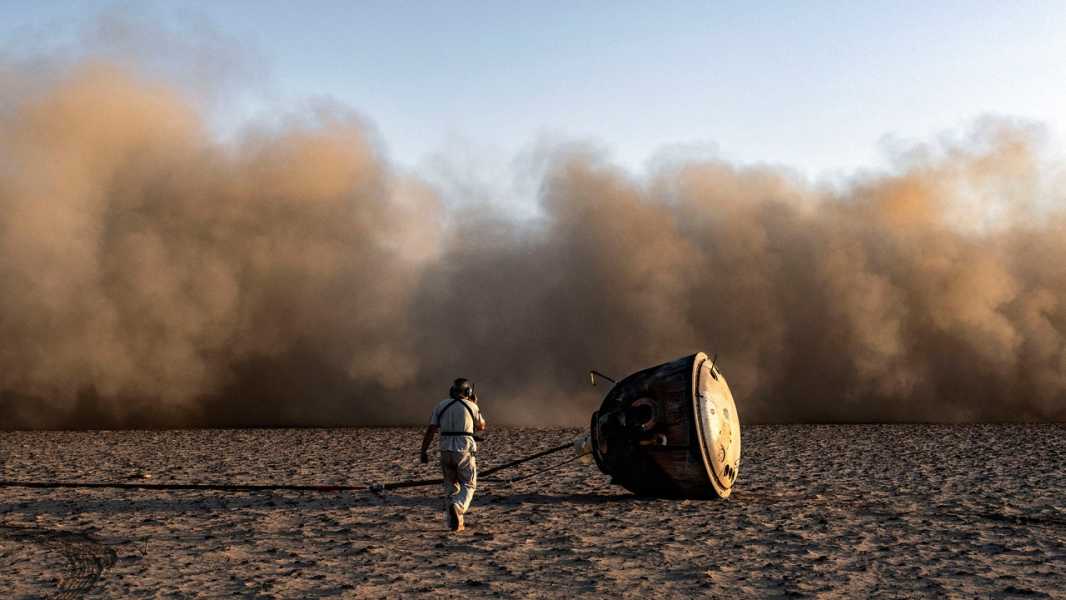
Save this storySave this storySave this storySave this story
The Irish-born photographer Andrew McConnell first started going to Kazakhstan because he wanted to see a Soyuz space capsule fall out of the sky. At the time, in 2015, the capsule, which launched from the Baikonur Cosmodrome in southern Kazakhstan and came back to Earth about four hundred miles to the north, was the only way for humans to get to and from the International Space Station. A longtime photographer in conflict zones, McConnell was eager to photograph something a little less dispiriting. He connected with the ground team that films and photographs the landings for Roscosmos, Russia’s space agency, and travelled to the Central Asian steppe.
The Soviets started building a rocket launch facility in Kazakhstan in 1955, after concluding that their previous launch site, in southern Russia, was not sufficiently in the middle of nowhere. The Kazakh site was near a rail line and a river, about as close as you could get to the equator while still staying in the Soviet Union (not that close), and very far from everywhere else. The climate was harsh—very hot in summer, very cold in winter. Other than that, it was perfect. The idea that Kazakhstan might some day become an independent country did not figure into anyone’s calculations.
At first, Baikonur was a weapons facility, not a cosmodrome. Soviet engineers were trying to develop a rocket powerful enough to carry a nuclear warhead as far as Kansas. But the lead engineer, Sergei Korolev, happened to be a space enthusiast. After his team launched an intercontinental ballistic missile from Kazakhstan to Kamchatka, in far-eastern Russia, he suggested to the Soviet leadership that they could use the same technology to put a “very simple satellite”—“sputnik,” in Russian—into space.
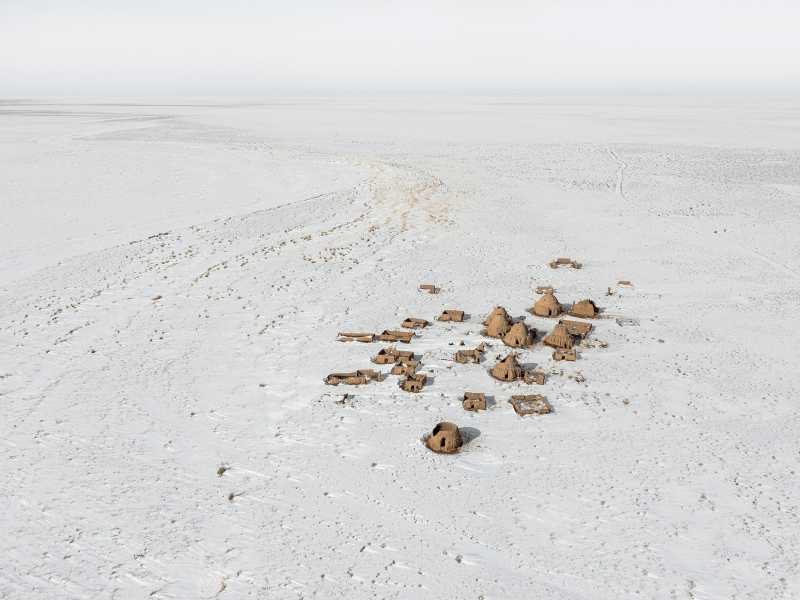
Nomadic burial tombs, Soyuz landing zone, Kazakhstan, 2020.
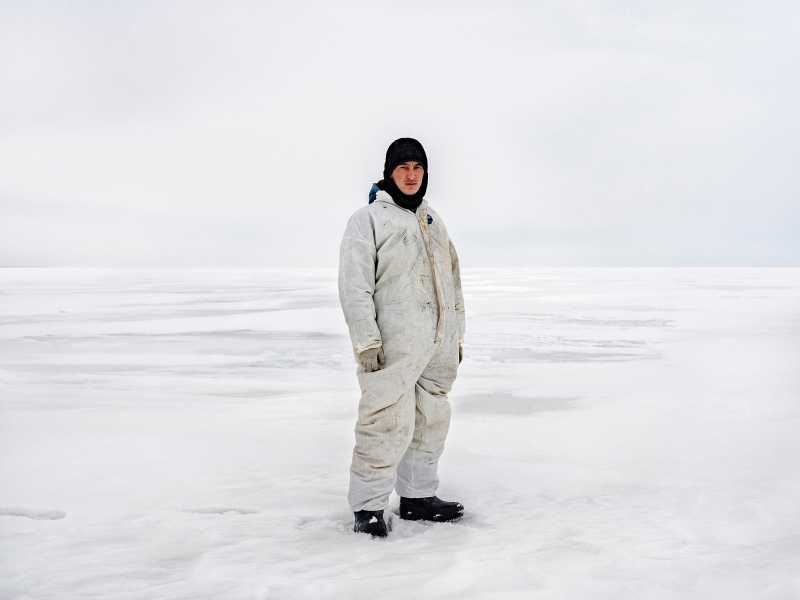
Aral Sea, Kazakhstan, 2023.
Sputnik launched from Baikonur just a few months later, on October 4, 1957. It was the minimal viable product for orbiting the Earth—a hundred and eighty-four pounds of reflective metal and a radio transponder—and it shocked the world. For the first time, humans had put an object into orbit—like gods. Four weeks later, on the eve of the fortieth anniversary of the Bolshevik Revolution, an adorable stray dog, Laika, was launched from Baikonur on Sputnik 2; she died of overheating. In 1961, the Soviets launched the first man into space, a twenty-five-year-old fighter pilot named Yuri Gagarin. He orbited the Earth almost exactly one time before landing in western Siberia. As Asif A. Siddiqi writes in “Challenge to Apollo: The Soviet Union and the Space Race, 1945-1974,” his monumental history of the Soviet space program, Gagarin assured the locals that he was neither an alien nor an American, but that turned out to be unnecessary: they had already heard about his historic flight on the radio.
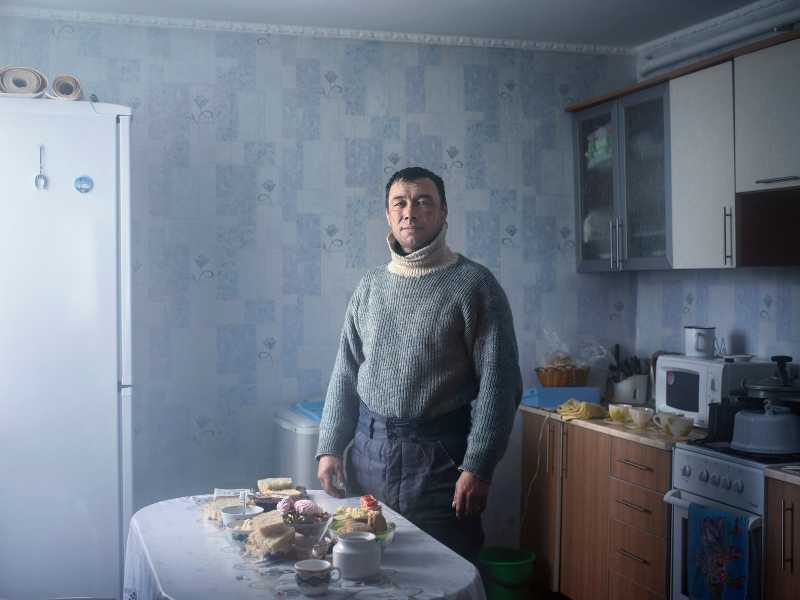
Baran, Kazakhstan, 2016.
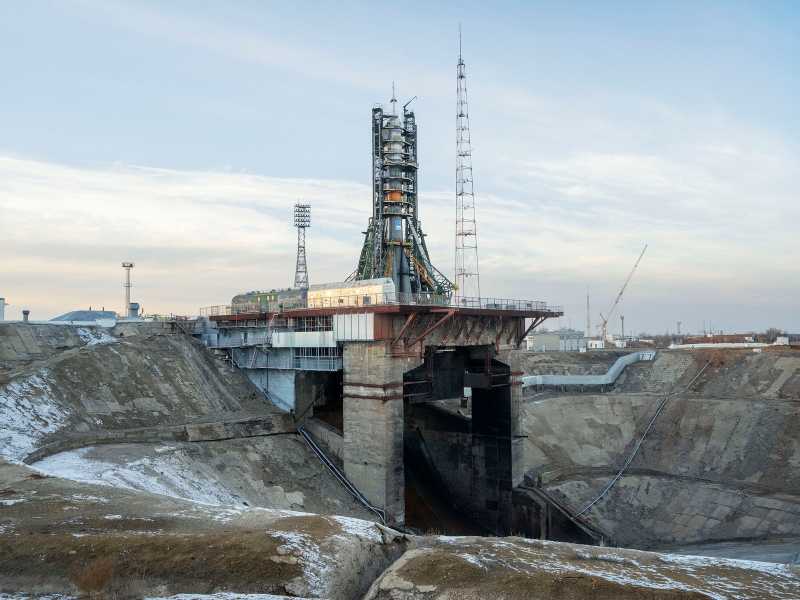
Launch Pad One, Baikonur Cosmodrome, Kazakhstan, 2015.
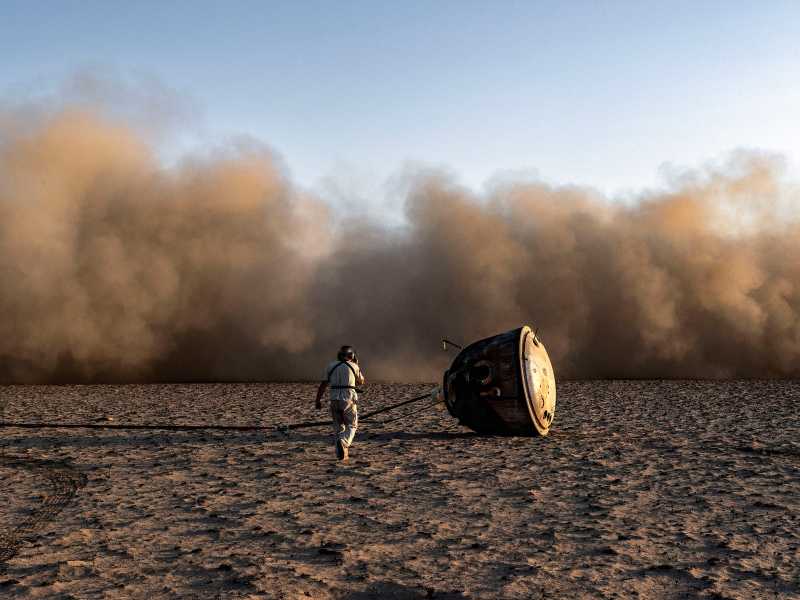
A Soyuz capsule carrying the Russian cosmonaut Fyodor Yurchikhin, and the U.S. astronauts Peggy Whitson and Jack Fischer lands on the steppe, in Kazakhstan in 2017.
Baikonur became a thriving space center, in certain ways defying the general rot of the Soviet system. Soviet cars were terrible, Soviet clothes were ill-fitting, but their spaceships worked. In 1986, the same year that Reactor No. 4 melted down at Chernobyl, dramatically underscoring the failure of Soviet nuclear technology and environmental protection, the American space program suffered the Challenger catastrophe, sowing doubt about the efficacy of NASA. A few years later, the Soviets and then the Russians started selling seats on their space flights and launching commercial satellites. They made good money doing this, and the international community came to see them as a reliable partner for space travel. Even after Russia’s annexation of Crimea, in 2014, and its subsequent full-scale invasion of Ukraine, in 2022, NASA continued to coöperate with Russia to get its astronauts into space. The remarkable rise of Elon Musk’s SpaceX, and Russia’s increasing isolation on the world stage, is likely to alter this arrangement soon, but a U.S. astronaut, Tracy Caldwell Dyson, launched off from Baikonur as recently as this past March. She is scheduled to return to Earth—Kazakhstan, specifically—in September.
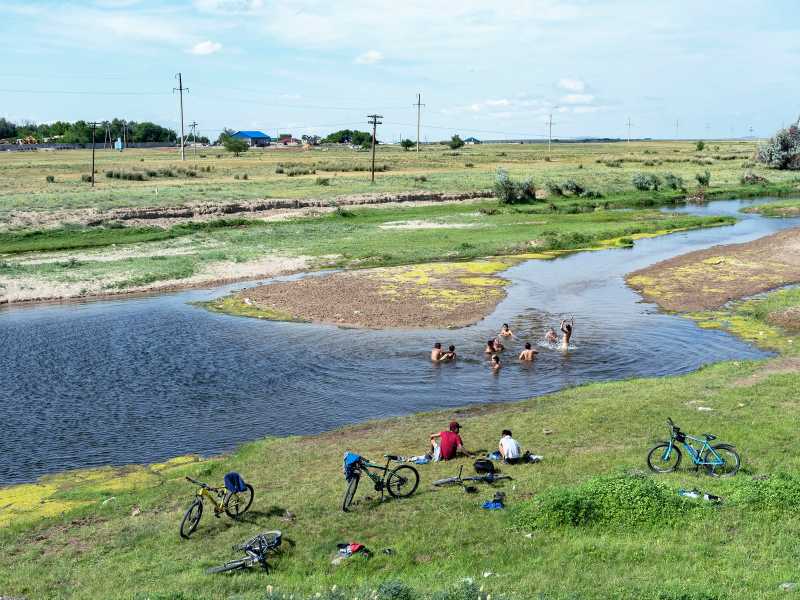
Karaganda Region, Kazakhstan, 2019.
McConnell, the photographer, travelled to Kazakhstan more than a dozen times between 2015 and 2023. He loved watching the Soyuz landings. He would head out into the steppe with the ground crew the night before. In summer, they would sleep in tents; in winter, in giant eight-wheel A.T.V.s. In the morning, he said, they’d wait to hear what sounded like an explosion. This was a part of the capsule coming off, so that the parachute could deploy. Then they’d look up to the sky and locate a silver dot. “We watched it for about a minute to see what direction it’s heading in, and then everybody jumped into the jeeps, and we took off like a bat out of hell across the steppe,” he recalled. Eventually, the capsule would come to Earth—a small metallic thing, smaller than the smallest Fiat and the shape of a truncated cone. Members of the ground crew would open it up, and then the astronauts, who had not experienced the Earth’s gravity for months, would be carried out by their arms and legs and placed in a chair, where their vitals were checked, and they were photographed and occasionally given a phone to call home.
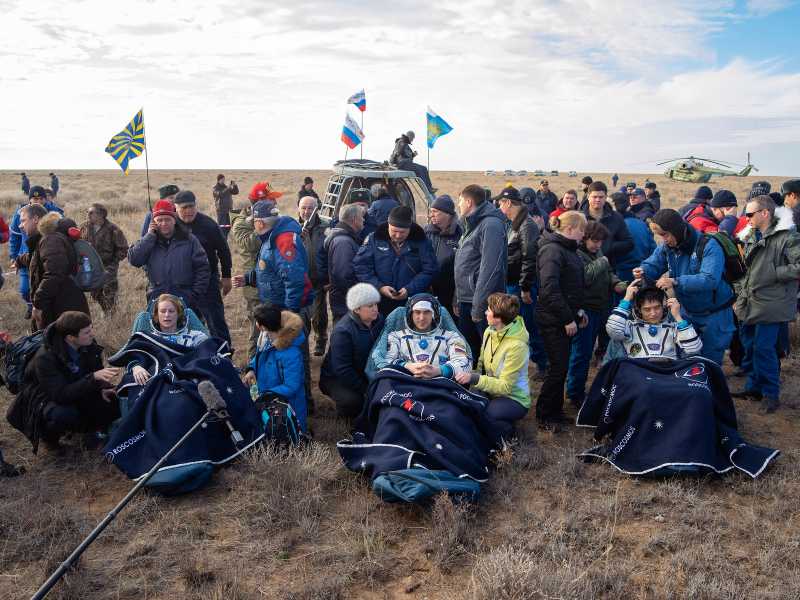
The NASA astronaut Kate Rubins, the Russian cosmonaut Anatoly Ivanishin, and the Japanese flight engineer Takuya Onishi, pictured moments after returning to Earth on Soyuz MS-01 in Kazakhstan, in 2016.
It was wild, McConnell said, how few people were there to see these objects fall from outer space. Occasionally, some locals would come over on horseback and check it out. Dmitry Kalmykov, an ecologist from nearby Karaganda, compared it to the situation on Tatooine, Luke Skywalker’s home planet—because there are spaceships flying around and most of the people on the ground, like Skywalker’s adoptive family, are farmers. The juxtaposition of the two worlds, one of which had been grazing horses in this area of the steppe for millennia, the other of which had, in a moment of daring and gamesmanship, started launching people into the cosmos with rockets meant to annihilate humanity, filled McConnell with wonder. Some people have built fences and pig pens from abandoned rocket parts. In one photo captured by McConnell, and featured in a book forthcoming from GOST, “Some Worlds Have Two Suns,” a family has been using the nose cone of a rocket as a coal storage bin. “It’s about the only practical benefit the local population has received from the exploration of space,” Kalmykov said.
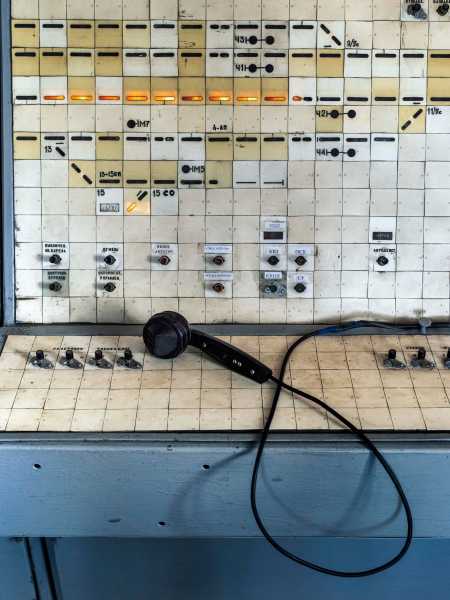
Railway station, Karaganda Region, Kazakhstan, 2016.
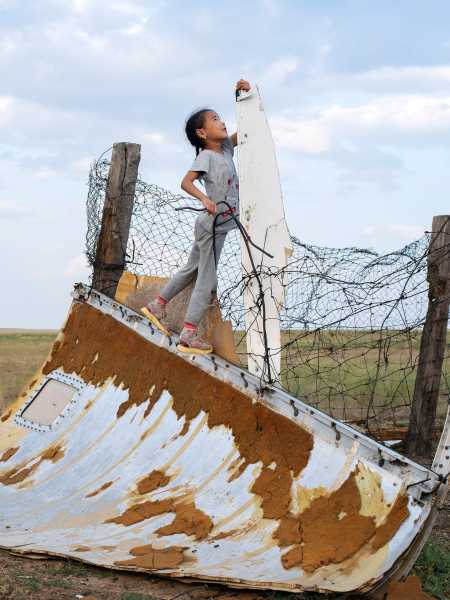
Kenjebai-Samai, Kazakhstan, 2022.
Russia has signalled that it is growing weary of Baikonur. The rent is too high—a hundred and fifteen million U.S. dollars a year—and operating on foreign soil can be inconvenient. Kazakh activists and politicians frequently complain, for example, about environmental damage from the launches, and sometimes even demand compensation. More than a decade ago, Roscosmos began investing in a second cosmodrome, in eastern Siberia. The project has been plagued by corruption and incompetence, but it has begun launching satellites. Partly as a result, Baikonur is now half-functioning, half-abandoned, a busy spaceport in some parts, an abandoned relic in others.
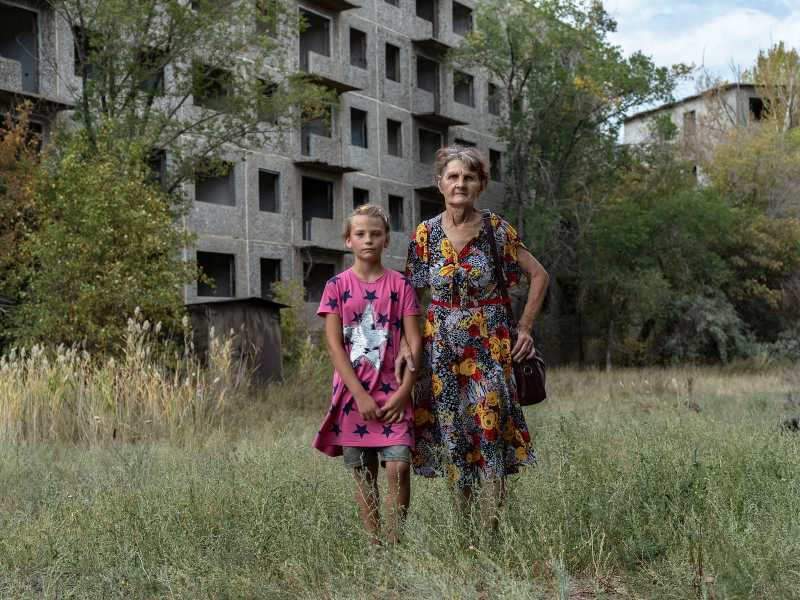
Saran, Kazakhstan, 2022.
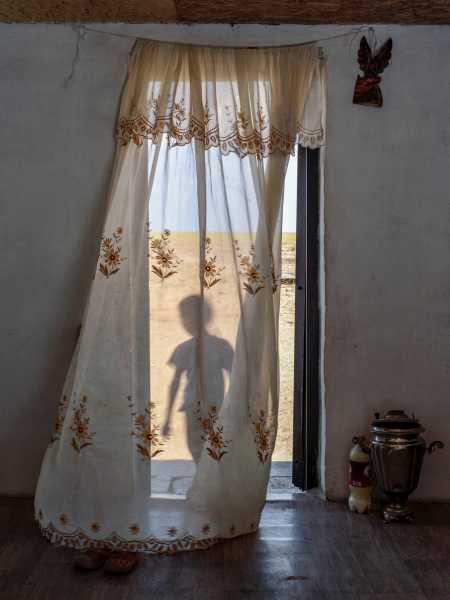
Kenjebai-Samai, Kazakhstan, 2022.
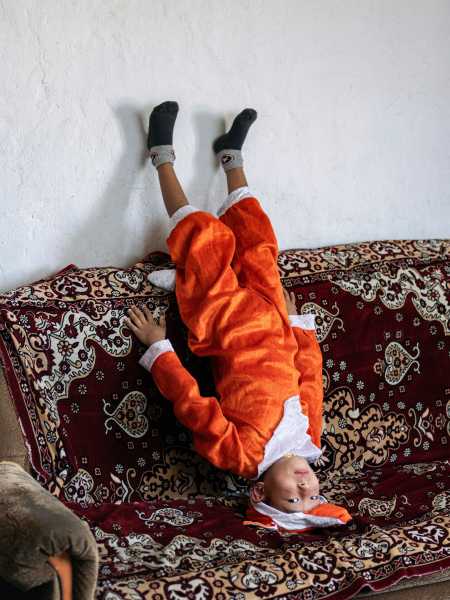
Kenjebai-Samai, Kazakhstan, 2022.
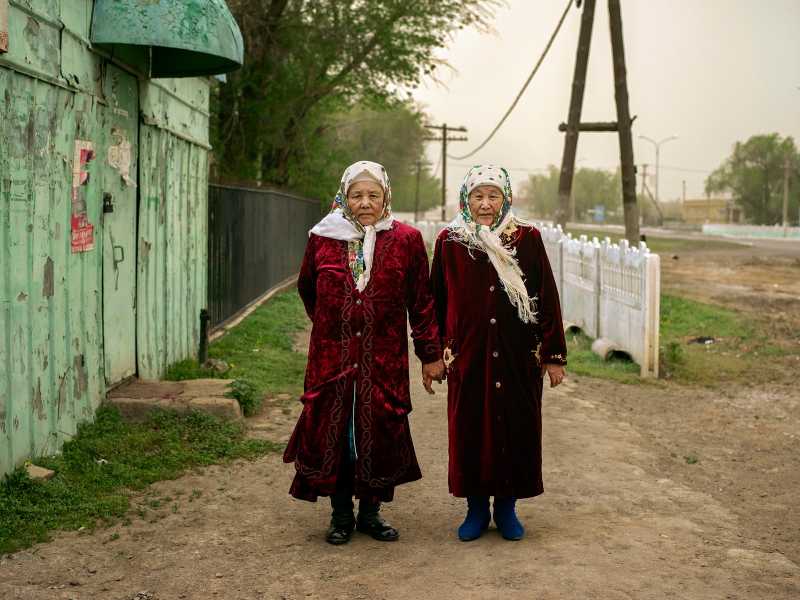
Karaganda Region, Kazakhstan, 2018.
What I see in McConnell’s photographs is the Soviet empire receding. In its wake it leaves monuments to its hubris and carelessness. Chernobyl, in Ukraine, is one such monument; the naval base at Sevastopol, which Russia has retained by annexing Crimea, is another. With regard to Baikonur, the Russians have largely squandered the incredible work done during the Soviet period. They have alienated key allies—two years ago, three cosmonauts on the International Space Station photographed themselves holding the flag of the self-proclaimed Luhansk People’s Republic, in occupied Ukraine—and, technologically, they have been falling behind SpaceX and China. Nor does there seem to be much progress in planning for an eventual handoff of the Baikonur project to Kazakhstan. When the Russians leave, it is likely that they will simply leave.
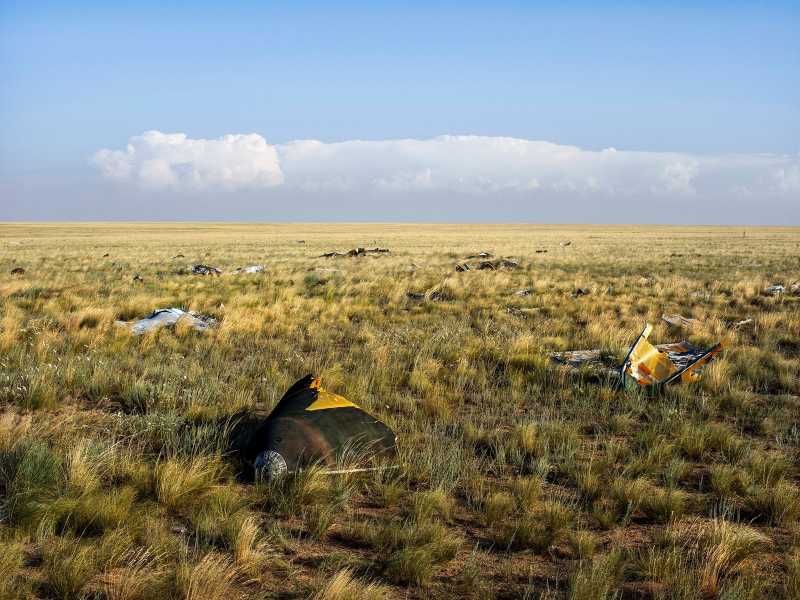
Kenjebai-Samai, Kazakhstan, 2019.
Sourse: newyorker.com